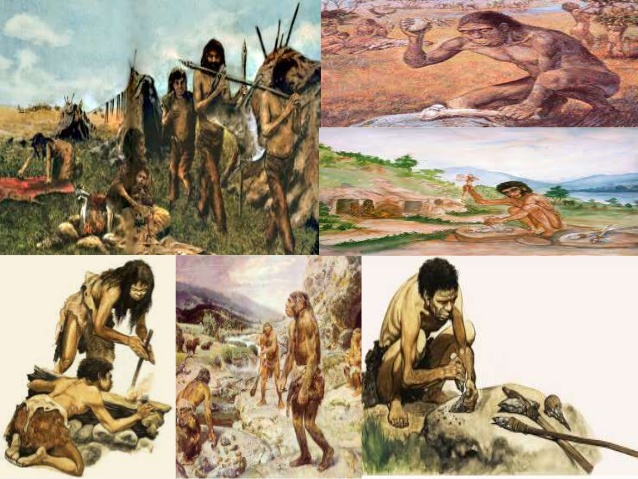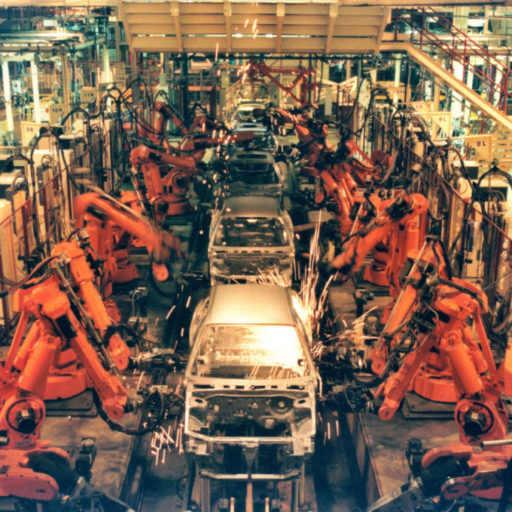
Division of labor:
The social division of labor is the separation of the labor process into different tasks and spheres of work in the production of things, not only on a personal-biological level but on a broader social level. The initial spontaneous division of labor was natural, based on the division of labor between in childbearing and age groups, young and old. In primitive society productive activity was based on a natural division of labor and simple cooperation.
Simple cooperation involves each member of a community doing the same thing to accomplish a goal, which would have been unattainable and unthinkable for a single person who was, say, hunting a large animal or building a home. In primitive communities, communal life prevailed that corresponded to the natural division of labor and simple cooperation.
A certain stage in development of the productive forces brought forth the first agricultural revolution and created a new division of labor, the social division of labor
With the advance to cattle-breeding and agriculture there arose the social division of labor, that is, the division of labor under which at first different communities, and then individual members of communities as well, began to engage in differing forms of productive activity. The separation of the pastoral tribes was the first great social division of labor. The pastoral tribes engaged in breeding cattle achieved substantial successes. They learned to care for the cattle in such a way that they received more meat, wool and milk. This first big social division of labor already led to what was for that age a noticeable rise in the productivity of labor. . . .
(Political Economy, A Textbook, 1957.)
http://www.d-meeus.be/marxisme/manuel/Textbook_Political_Economy_1957.pdf
Changes in the productive forces create the condition for, and cause changes in, the social and technical division of labor. The rise of manufacture involved a new division of labor that divided production into separate tasks, each carried out under one roof by separate workers. With development of the industrial revolution and industrial machinery, a new technical division of labor and new social organization of labor developed.
Computers and robotics begin destruction of the social and technical division of labor by kicking human labor out of the sphere of commodity production and by doing that free humankind from their ancient enslaving subordination to a division of labor.
(See, Manufacture.

Division of labor (destruction of):
Robotic production will eventually eliminate human labor as the primary component in production of material value, and by doing that begin destruction of the division of labor.
Robotic production is qualitatively different from industrial production. Industrialism increased the division of labor. Robotics gradually destroys more and more of the division of labor. This means that entire categories of jobs are wiped out forever, as the invention of the electric refrigerator in the past destroyed the job of bringing ice for “ice boxes” to individual homes.
Industrialism augmented human labor in production. Robotics replaces human labor in production. Industrialism decreased value (human labor time) in commodities. Robotics destroys value in commodities. Commodities created by robots force identical commodities created by human labor off the market because the robot produces better, faster and more cheaply.
Robots and computers can process information and knowledge, a function once limited to human beings. Robots reproduce the skills and labor of the workers in the workers’ absence and destroy the division of labor. Even occupations that seemed secure, because they involve immediate interpersonal interactions (surgeon, teacher, waiter, fast-food worker) are being eliminated.
Stage by stage robotics destroys the division of labor and the social organization of labor that sustained capitalist commodity production. Under capitalism, robotics creates a greater mass of commodities and poverty-stricken moneyless proletarians that cannot buy these products, because they are increasingly kicked out of the social division of labor and have no money.
Robots and computers impel the social revolution that destroys the society that was built up on the basis of the industrial revolution. Robotics brings the system of capitalist production to its historical end. As robotics destroys the division of labor, and society is brought to political revolution, different classes fight to reorganize the new economy in their favor.
(See, Social revolution.)
Marxist Glossary Expanded Edition 3.0 can be found on MARS website at the Marxist Glossary for the 21st Century page. Also can be downloaded from the files of the Marxist Glossary Discussion group Facebook page.